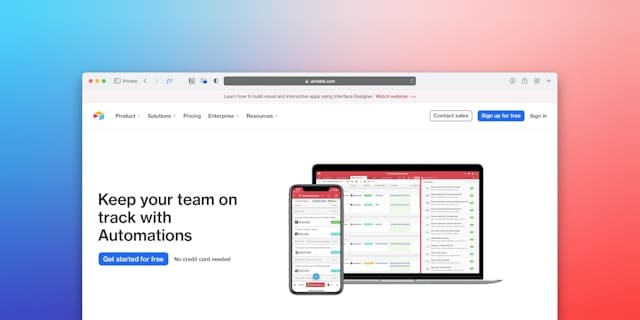Spot the real ones, dodge the fakes & make confident buying decisions
🛒 Introduction: Reviews Are the New Word of Mouth
In today’s digital shopping world, online reviews are everything. Before we buy anything — whether it's a smartphone, a skincare serum, or a kitchen blender — we turn to product reviews for guidance. 🗣️💬
But here’s the catch: not all reviews are genuine. Many are fake, biased, outdated, or misleading. If you're not careful, you can end up buying a product based on false hype or manipulated ratings.
I’ve spent years analyzing consumer trends and e-commerce behavior. In this guide, I’ll show you how to read product reviews like a smart, savvy shopper — one who saves money, avoids scams, and always makes informed decisions. ✅💸
💡 Why Reviews Matter (But Only When Read Right)
According to BrightLocal’s 2024 Review Survey:
-
⭐ 91% of consumers read online reviews before buying
-
⏰ 40% say they only trust reviews posted within the last 2 weeks
-
🤖 33% of shoppers have fallen for fake reviews at least once
So while reviews can be a goldmine of info, they can also be a minefield of misinformation. Here's how to separate the real from the rubbish.
🔍 1. Look Beyond the Star Rating ⭐⭐⭐⭐☆
It’s tempting to judge a product solely by its average rating. But a 4.5-star product might still have:
-
🤖 Dozens of fake 5-star reviews
-
⚠️ Several 1-star reviews hiding serious flaws
-
🗓️ Outdated reviews from years ago
👉 Instead, click into the review section and read the most recent reviews first. Look for detailed, balanced insights, not just “Great product!” or “I love it!” fluff.
🧠 2. Use the 20/20 Rule: Focus on the Extremes
A smart shopper looks at both 5-star and 1-star reviews. Here's why:
-
5-star reviews may highlight standout features, fast shipping, or above-average quality
-
1-star reviews often expose problems like defects, poor packaging, or misleading descriptions
🧪 Pro Tip: Scan the first 20 positive and 20 negative reviews. You’ll often notice patterns — like repeated complaints about battery life or sizing issues.
🧾 3. Analyze Reviewer Profiles (If Available)
Some platforms like Amazon, Flipkart, and Walmart let you view the reviewer's profile.
Look for:
-
Verified purchases 🏷️
-
A mix of positive and critical reviews
-
Specific, helpful language
-
Photos or videos of the actual product 📸
🚩 Red Flag: Reviewers who only post 5-star reviews for similar products, or who post dozens of reviews in a short time, may be fake accounts.
📸 4. Prioritize Reviews with Photos or Videos
Smart shoppers trust what they can see. Visual reviews help you:
-
Confirm real product appearance (colors, materials, size)
-
Spot usage conditions (unboxing, functionality, defects)
-
Verify that the review is from a genuine buyer
📸 Platforms like AliExpress, Daraz, Shopee, and Amazon often include user-uploaded photos. Always check these before buying!
📅 5. Filter by Most Recent Reviews
A product that was great 2 years ago may be low quality today due to:
-
Changes in manufacturing
-
New sellers or suppliers
-
Product version updates
🎯 Click “Sort by most recent” and look for consistent satisfaction in the last 30–60 days.
⚠️ 6. Watch for Fake Review Red Flags
Fake reviews can be generated by bots, paid promoters, or even competitors. Here's how to spot them:
🚩 Warning Signs of Fake Reviews:
-
Overuse of brand/product name (“This XYZ 2000 blender is amazing!”)
-
Robotic or unnatural tone
-
Repeated phrases across multiple reviews
-
No details about the product usage
-
Reviews posted in clusters within hours/days
🧠 Tip: If a product has hundreds of glowing reviews but no criticisms, be suspicious.
Use tools like:
-
Fakespot (fakespot.com)
-
ReviewMeta (reviewmeta.com)
To analyze Amazon reviews and weed out unreliable ones. 🕵️♂️
🧵 7. Match Reviews to Your Specific Use Case
Even legit reviews might not apply to your needs.
🧠 Ask yourself:
-
Is the reviewer using it for the same purpose as I am?
-
Are they in a similar region or climate?
-
Do they mention the features I care most about?
🛒 Example: A reviewer in California might love a summer jacket for 15°C, but you’re in Canada at -10°C — totally different needs.
🧠 8. Look for Balanced, Constructive Reviews
The most helpful reviews often contain:
-
Pros ✅
-
Cons ❌
-
Use experience 🧪
-
Specific comparisons 🆚
-
Suggestions for improvement 🛠️
These are written by real users who want to help, not hype.
📌 Bookmark or highlight such reviews. They are often the best indicators of whether the product will suit you.
🌍 9. Don’t Ignore Global Platforms
If you're shopping in the US, UK, India, Pakistan, or the UAE — reviews vary widely by region.
🌐 Trusted e-commerce platforms with helpful reviews:
-
Amazon (Global)
-
AliExpress (Visual reviews from global users)
-
Flipkart (India)
-
Daraz (Pakistan, Bangladesh, Nepal)
-
eBay (Trusted seller & buyer ratings)
-
Walmart (US + Global suppliers)
💬 Bonus Tip: Always check the country-specific store (e.g., Amazon.in vs. Amazon.com) for local feedback.
💬 10. Ask Questions in the Review Section or Q&A
Many platforms allow shoppers to ask public questions about the product. This is a goldmine of useful info. 🧠
Ask about:
-
Sizing
-
Compatibility
-
Longevity
-
Shipping quality
-
Hidden charges
📢 Often, other buyers or the seller will respond honestly — helping you make a better decision.
✅ Quick Checklist: Be a Smart Review Reader
Here’s a mini checklist you can save:
🔲 Don’t judge by star rating alone
🔲 Read both 5-star & 1-star reviews
🔲 Look for verified buyers with photos
🔲 Use tools like Fakespot or ReviewMeta
🔲 Sort reviews by "Most Recent"
🔲 Match reviews to your personal use
🔲 Avoid products with only vague praise
🔲 Check region-specific feedback
🔲 Ask questions in Q&A section
📊 SEO Insight: Why This Matters
“How to read product reviews” is an increasingly searched keyword across regions like:
-
🇺🇸 USA
-
🇮🇳 India
-
🇬🇧 UK
-
🇵🇰 Pakistan
-
🇦🇺 Australia
-
🇦🇪 UAE
Other long-tail SEO-friendly keywords to target include:
-
“spot fake reviews online”
-
“Amazon review analysis tips”
-
“how to trust product reviews”
-
“smart shopping online hacks”
-
“ecommerce review checklist”
🧠 Final Thoughts: Shop Smarter, Not Faster
Online reviews are one of the most powerful tools in your shopping toolkit — when used wisely. Don’t just trust the stars. Be curious. Investigate. Ask questions. And learn to spot the red flags.
With a little awareness and the right tools, you’ll make smarter, safer, and more satisfying purchases — every single time. 🎯🛍️








Leave a Comment